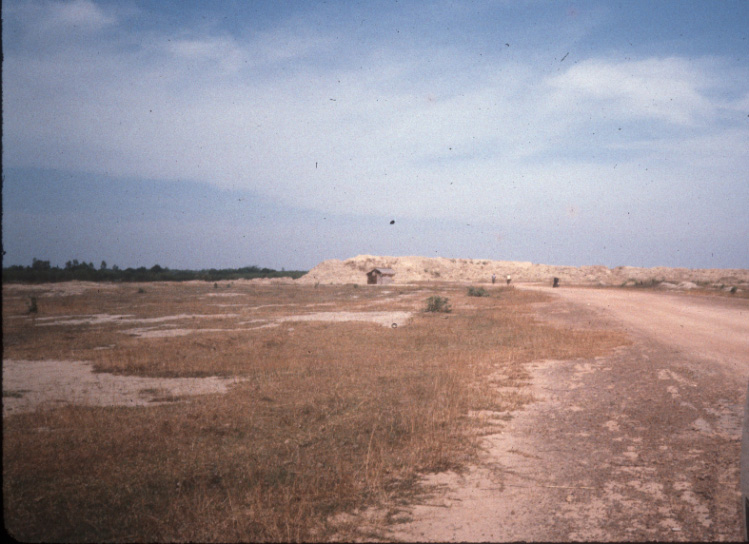The Countryside of Southern Vietnam
Photos Taken by Edwin E. Moise, Vietnam, 1986 and 1989
(1) Along Highway 1, from the 17th parallel southward to the Hai Van Pass, 1989
Rice fields. The dark lines are the weeds
growing on the dikes separating fields.
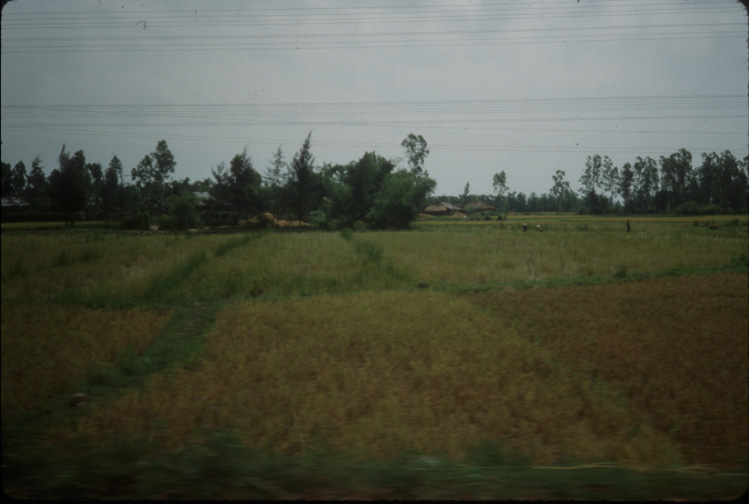
The two people are
scooping water from one irrigation ditch to another, using scoops slung by ropes
from bamboo tripods.
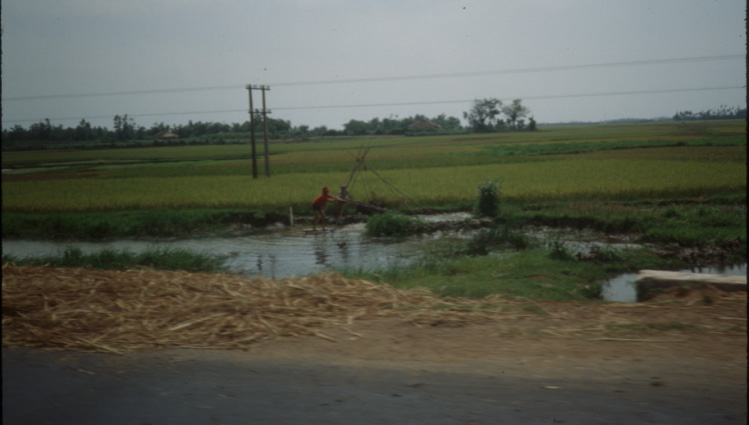
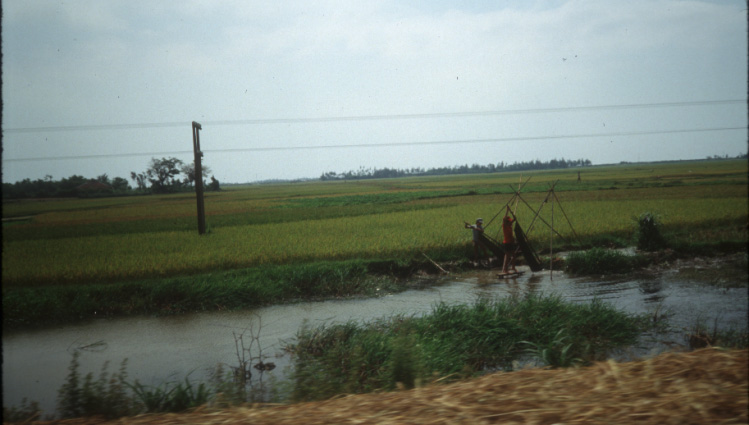
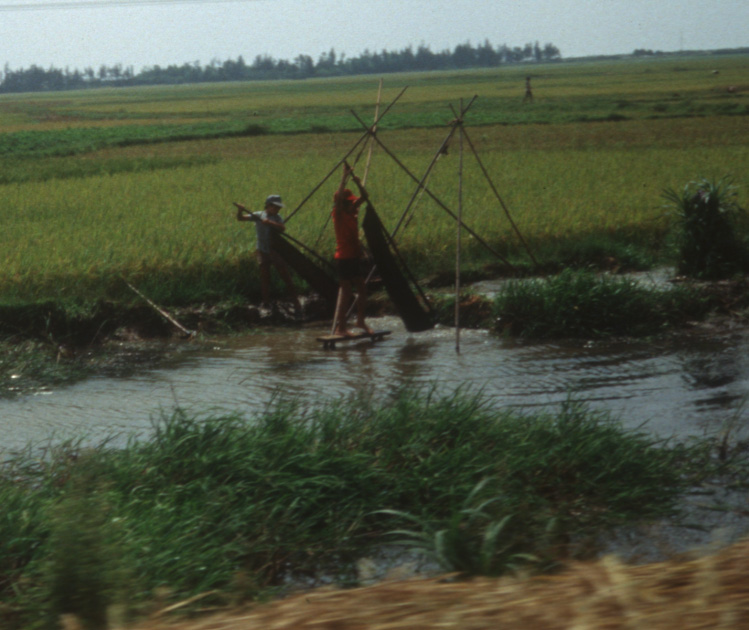
The pond looks as if it might have started as a bomb crater.

What I think I am seeing here is very sandy soil near the road, so sandy as to
be of little or no use for agriculture. But I am not certain. There is reasonably
good-looking crop land beyond.
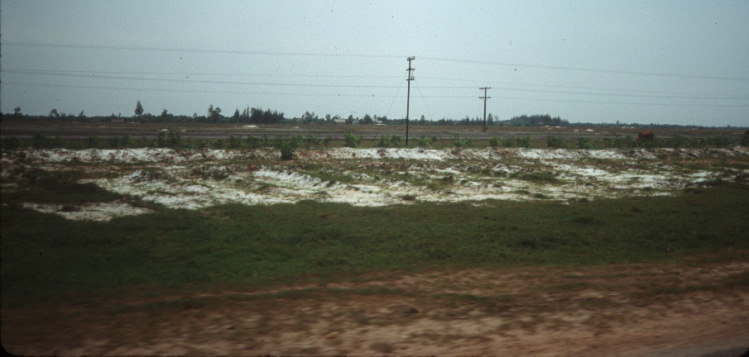
Same, zoomed for closer view.
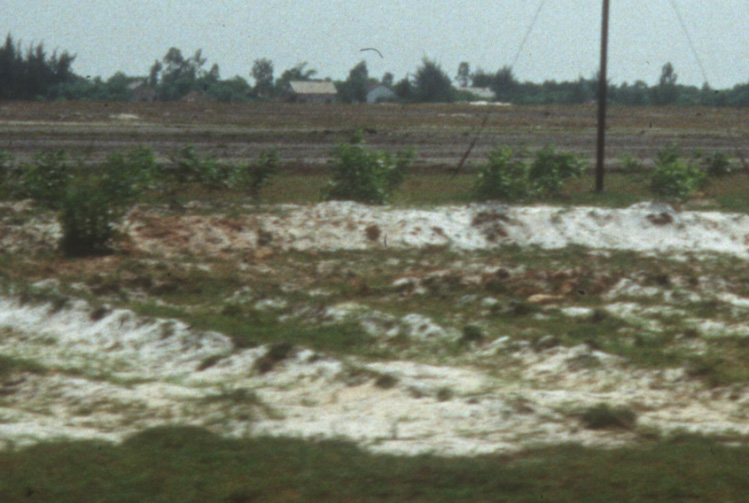
A vegetable field, I think.

Hot red peppers being dried in the sun, on the roof of a house.
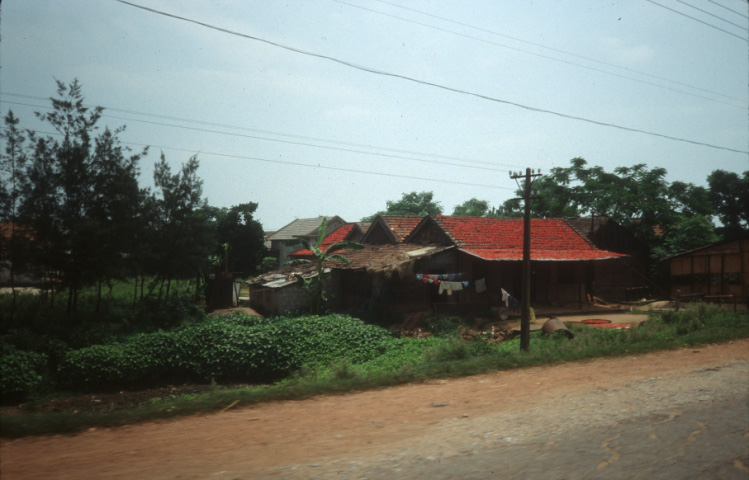
Soil looked pretty sandy to me, but they were growing vegetables.
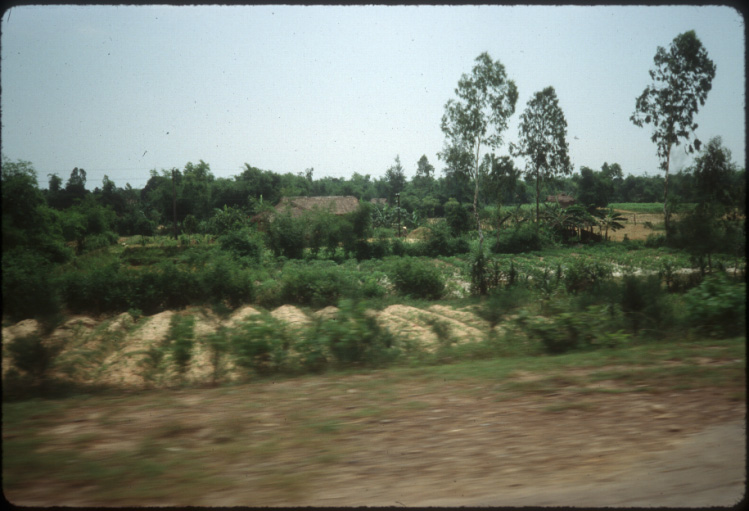

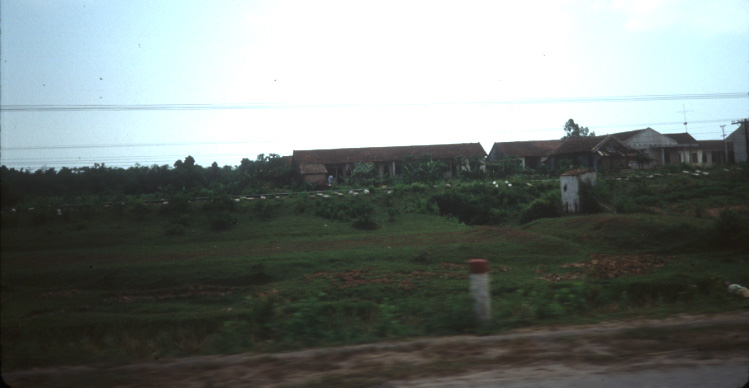
Note railroad tracks paralleling road.
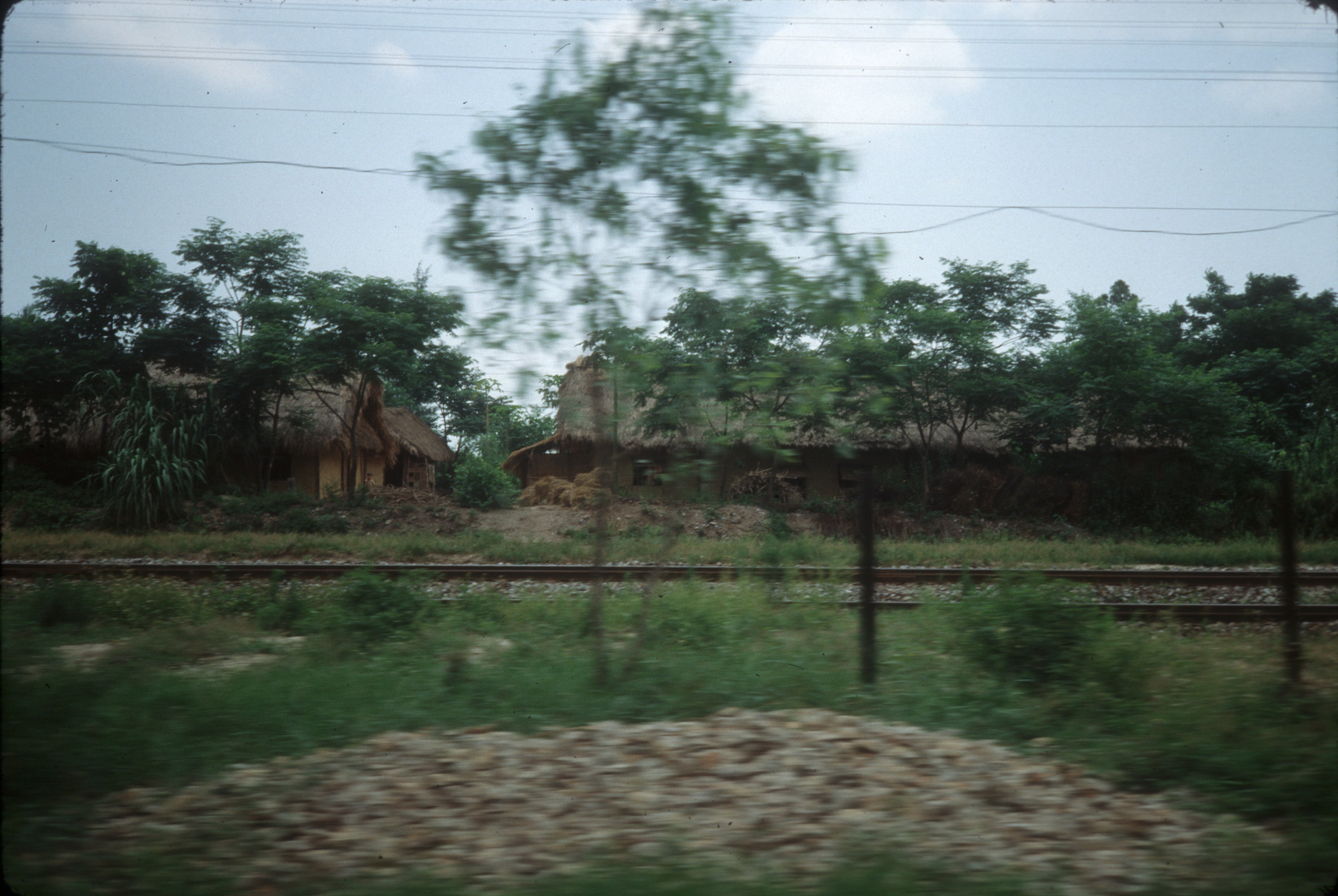
Farmers transplanting rice seedlings.
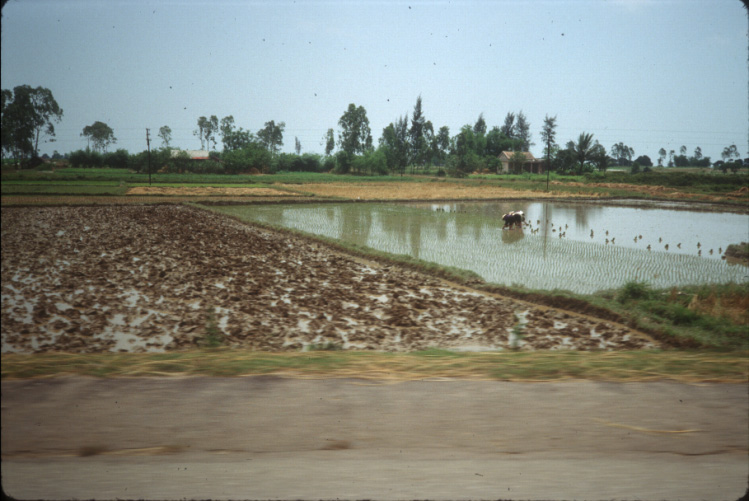
Same, zoomed for closer view.
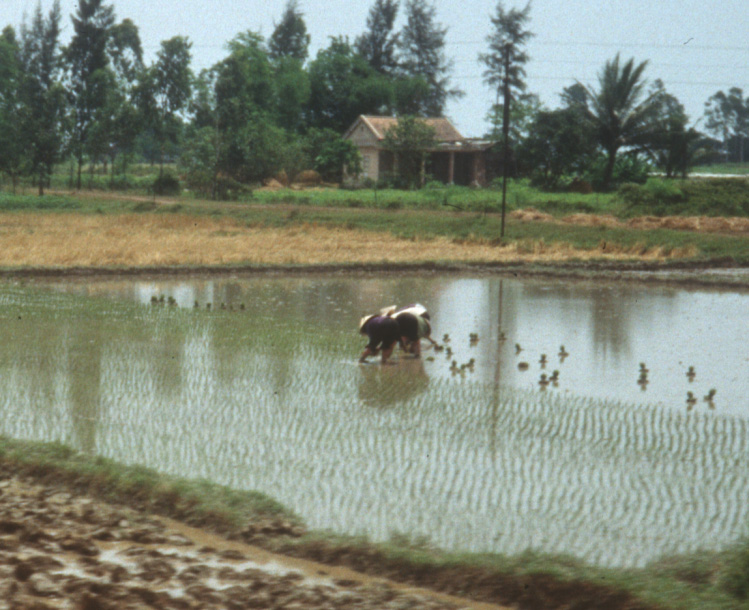
The Hai Van Pass, between Hue and Danang. There are a number of old blockhouses at
the pass, left over from the Indochina Wars.
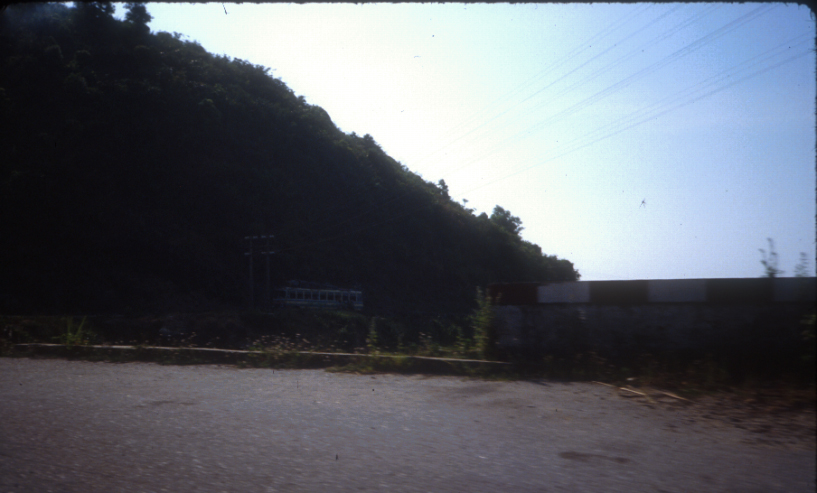
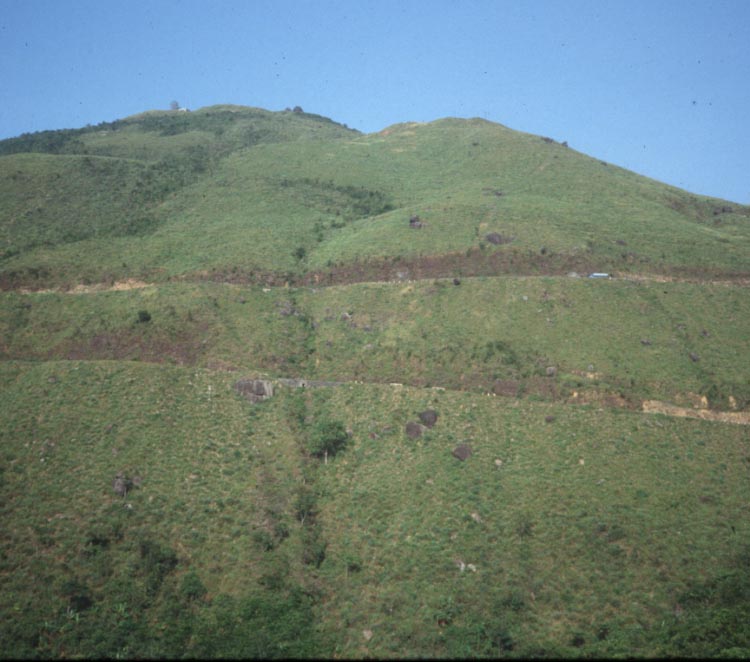
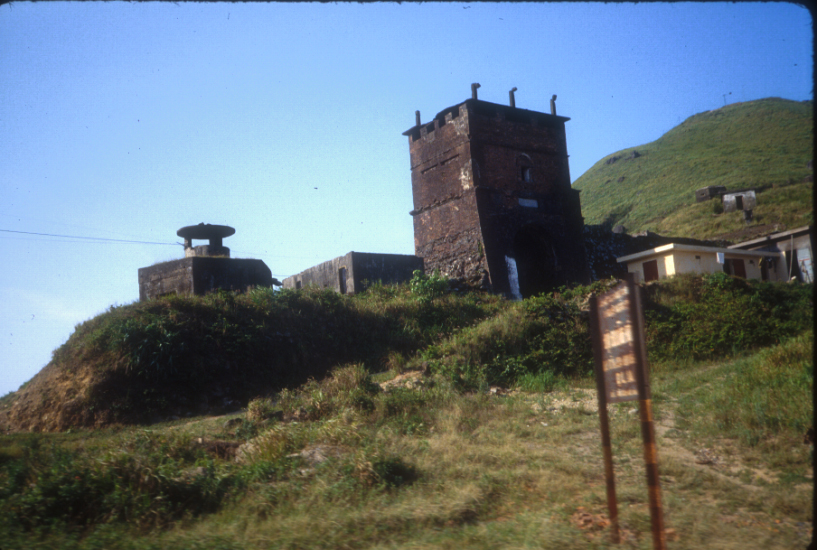
(2) North of Ho Chi Minh City, toward Cu Chi, 1986
Countryside
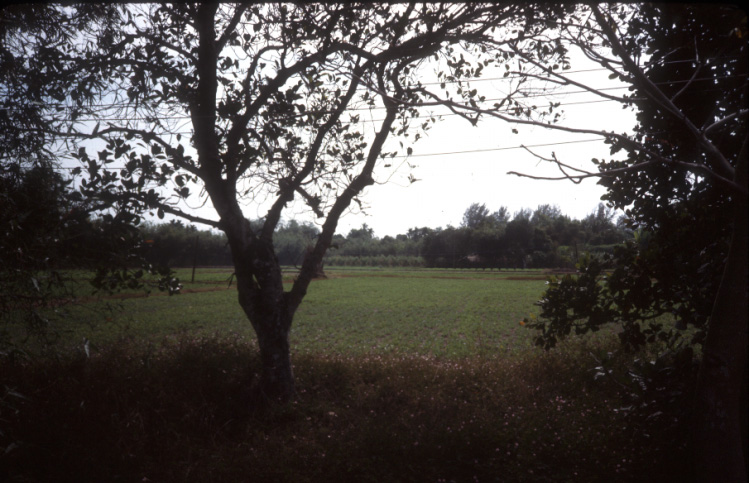
Rice fields, after rice has been harvested. You can see the dikes between fields,
crucial for water control when the fields are flooded.

Powered pump in field of the stubble left over after rice had been
harvested. When I saw it I assumed it was for pumping irrigation water, but now
I am not so sure of that. Possibly a well?

Same, zoomed in for clearer view of the pump.
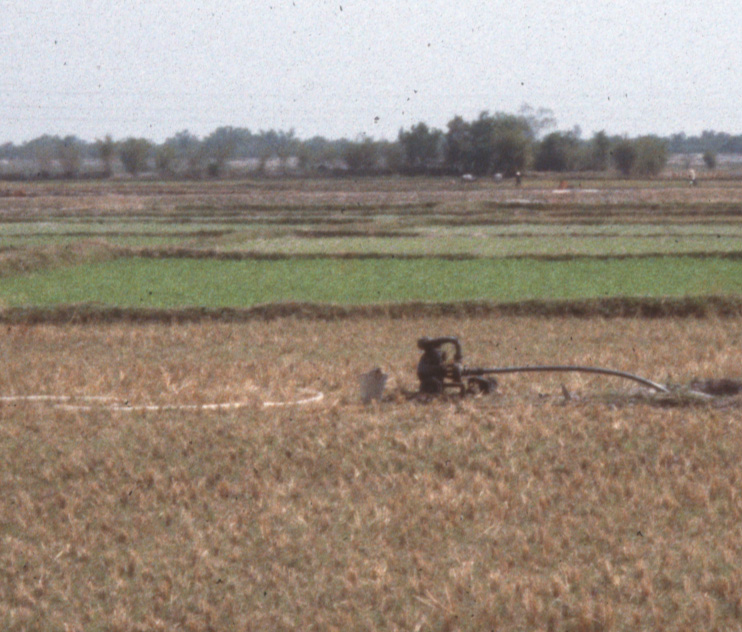
Small country road.
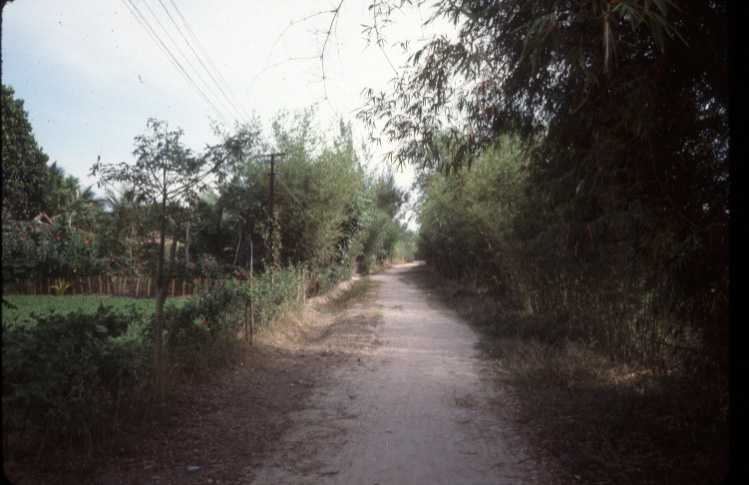
Bomb craters, from U.S. airstrikes during the war. No effort had been made to
put this land back into use. This may partly have been because the land simply
was not needed that badly, but also our guides explained to us that people who
hung around this area tended to have health problems, because of toxic chemicals
that the United States had dropped during the war. Notice the curved objects in
the extreme lower right corner of the photo.
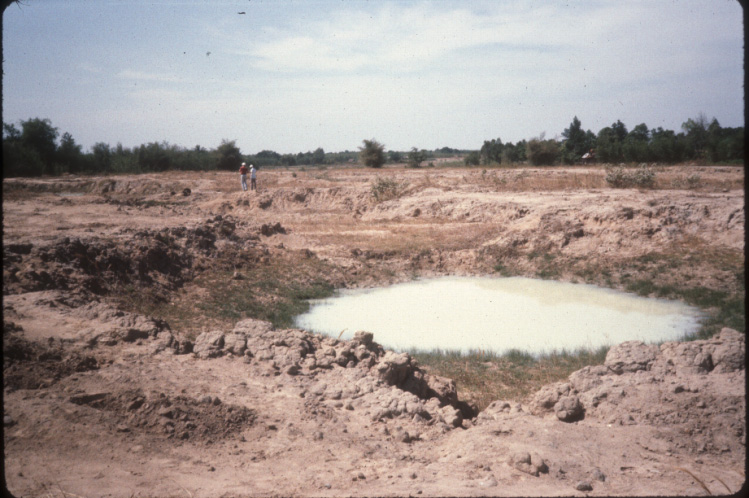
Closer view of decaying metal cannisters, half buried, one of which was barely visible
in the corner of the previous photo. The light-colored material inside the nearest
cannister was clearly not just light-colored dirt, it was something artificial,
light yellow in color. I am sure this
was CS; the United States had begun airdropping substantial
cannisters of CS in this area in January 1967. There was a mechanism that was supposed
to explode when the canister was a few feet off the ground, scattering the CS over a
wide area. The mechanism on this canister had presumably malfunctioned.
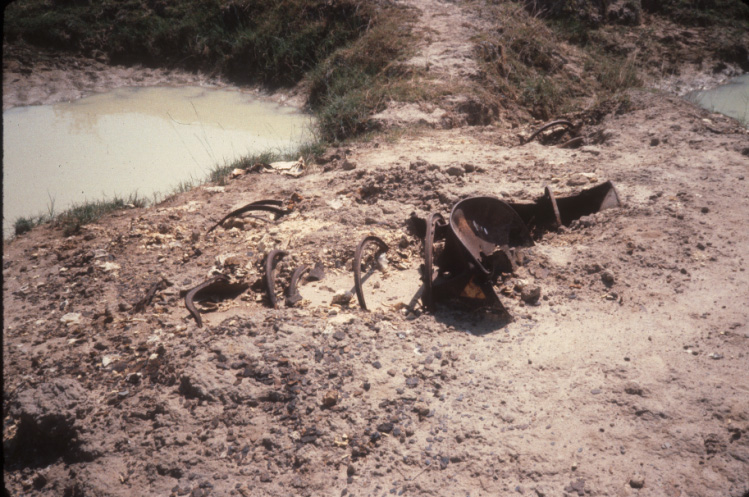
Berm around some former U.S. military facility, perhaps an ammunition storage facility.
